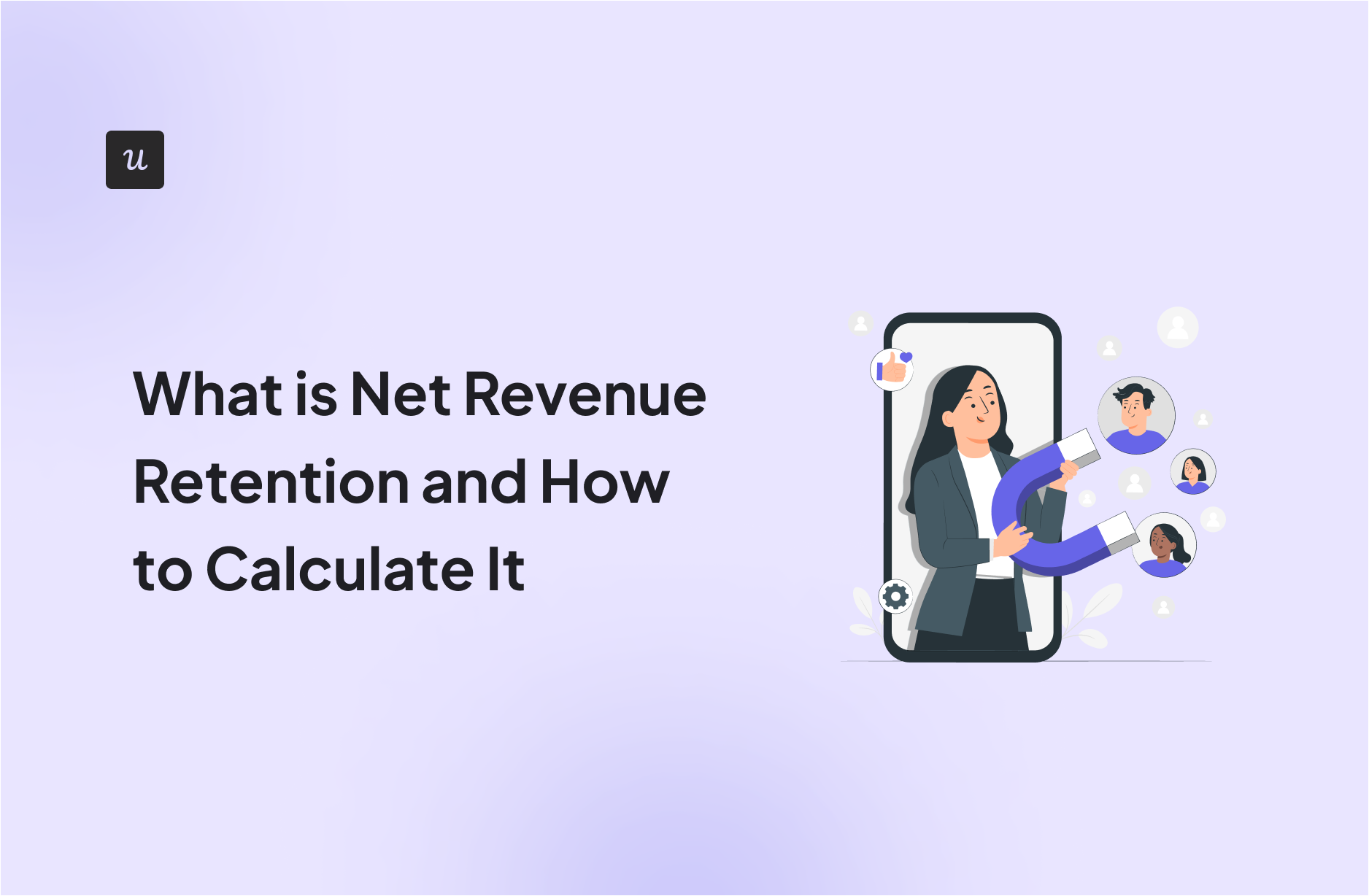
Get The Insights!
The fastest way to learn about Product Growth, Management & Trends.
What is Net Revenue Retention (NRR) in SaaS?
Also referred to as net dollar retention (NDR), Net Revenue Retention (NRR) is a SaaS business metric that calculates the percentage of revenue retained from existing customers over a specific period of time (usually monthly or yearly), including upgrades, downgrades, cross-sells, and cancellations.
Net Revenue Retention helps you understand how many existing customers are actually staying loyal and extending their subscriptions.
This metric is more accurate than annual recurring revenue (ARR) and monthly recurring revenue (MRR) because it also accounts for revenue fluctuations like upselling or downgrading.
Why is Net Revenue Retention important?
For SaaS businesses, revenue metrics can pinpoint which products and services are succeeding or failing with their target audience.
NRR helps you understand whether the service provided has the quality to engage customers and meet their needs. If it doesn’t, they will eventually cancel their subscription or downgrade, resulting in revenue churn. NRR rate can indicate negative underlying trends that you can resolve and improve customer retention rates.
NRR is a key metric that can uphold the company’s financial performance.
It also comes in handy while determining customer success quality and overall business health.
NRR can not only gather data about customer retention but also shed light on the expansion and growth aspects of SaaS companies.
How to calculate the Net Revenue Retention rate
To calculate Net Revenue Retention, subtract lost revenue (revenue churn and account contraction) from total revenue (starting recurring revenue plus account expansion) and divide by your starting amount.
Net revenue retention formula
Net Revenue Retention Rate (NRR) = (Starting MRR – Contraction MRR – Churn MRR + Expansion MRR)/ Starting MRR x 100
These are the metrics that you need to take into account while calculating NRR:
- Monthly Recurring Revenue (MRR): The amount of recurring revenue the company predicts to earn every month.
- Expansion MRR: Used to calculate the amount of expansion revenue from upsells, cross-sells, and add-ons from current customers within a month.
- Downgrade MRR: The opposite of Expansion MRR; it is used to calculate the decrease in revenue caused by existing customers within a month.
- Churn MRR: Measures how much revenue is lost due to customer cancellations in a month.
What is a good Net Revenue Retention rate in SaaS?
Across SaaS and subscription-based companies, anywhere above 100% is considered a good net retention rate.
NRR over 100% indicates growth via a consistent customer base, and that the revenue gained from upsells, cross-sells, and add-ons are larger than the revenue lost due to downgrades and churn.
Net revenue retention benchmarks
But business size is a factor when you’re looking for a “good NRR”. The benchmark for a good NRR differs for small, medium, and enterprise businesses.
Although an NRR above 100% is a good growth indicator for Enterprise businesses, a 90-100% NRR rate is considered great for small and medium businesses.
Here is a visual representation of industry benchmarks.
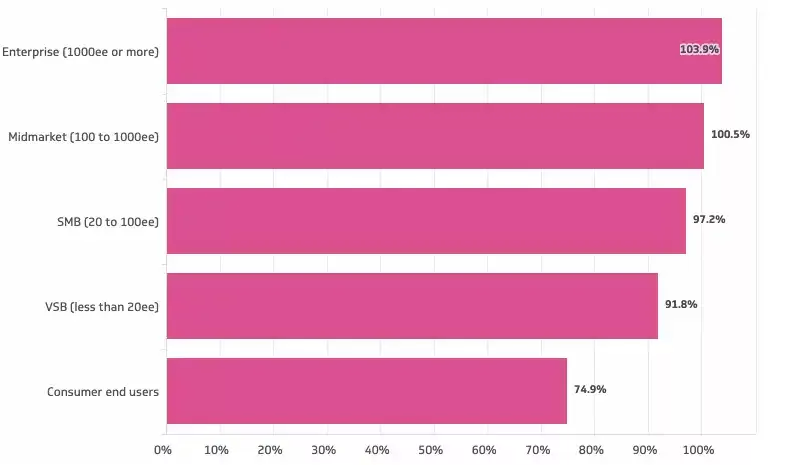
What’s the difference between NRR & Gross Revenue Retention (GRR)?
Gross Revenue Retention (GRR) is a SaaS metric that measures annual revenue lost from existing customers.
Although GRR is often confused with NRR, the two retention metrics are not the same.
Like Net Revenue Retention, Gross Revenue Retention is calculated based on MRR, Churn MRR, and Contraction MRR, but it does not include Expansion MRR and tends to decline as the company grows.
SaaS professionals debate over which metric between Net Revenue Retention and Gross Revenue Retention is the most appropriate for measuring customer success.
It might seem convincing to use NRR as it includes more information. But Gross Revenue Retention provides information on the long-term growth of the business.
How to calculate gross retention
Here’s the gross revenue retention formula:
Gross Revenue Retention (GRR) = (Monthly Recurring Revenue (MRR) at the start of the month – Churn – Downgrades)/ MRR at the start of the month
How to increase Net Revenue Retention rate in SaaS companies
From nurturing strong customer relationships with the existing customer base to identifying upselling opportunities, we will explore practical ways of increasing Net Revenue Retention.
Personalize the onboarding process to ensure customer success
If you want to personalize the onboarding process to engage and retain customers, one great tactic is to start creating customer segments right on the signup page.
For instance, you could add a welcome survey to learn about your new customers and their goals with your products, segment your user base, and then tailor the onboarding experience to fit their needs and ensure they get the value needed to stay with your SaaS business.

To extend this personalized approach to your mobile audience, create mobile-first onboarding flows with Userpilot, customizing welcome screens, carousels, and slideouts to deliver personalized messaging.
Offer in-app self-service support to boost customer experience
You can’t be there 24/7 to support any customer around the globe.
That’s why you need to offer self-service support, so users don’t have to leave your app, google your website, scroll down to find the support button, and browse messy documentation to find answers.
To solve this, add an in-app help center to give users access to the knowledge base, tutorials, videos, and support tickets right from the product UI.
With an in-app knowledge base, users won’t have to leave your product to find answers to their questions, plus it saves you and your support team time by answering repetitive queries.
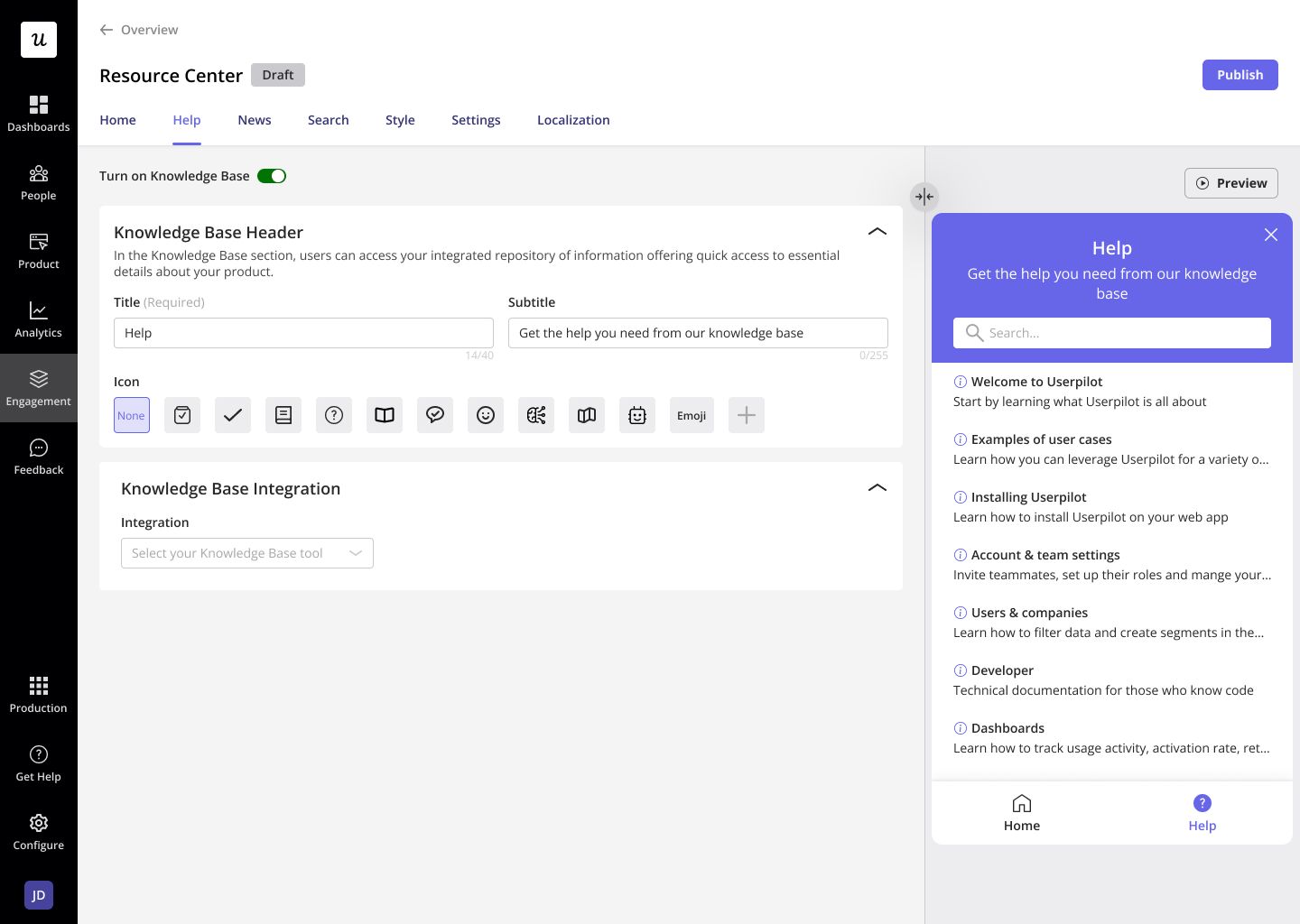
Use NPS to proactively identify customers before they churn
Net Promoter Score (NPS) surveys are popular for measuring customer loyalty. You can use the NPS surveys at key touchpoints throughout the customer journey.
NPS dashboards make it easier by showing the NPS score, the distribution of respondents across different categories, and trends over time. With it, you can analyze NPS results at a glance to visualize and understand customer sentiment and assess the risk for revenue churn.
You can identify the detractors (who score less than 7) and reach out to them to address their concerns and reduce the churn rate.
Track product usage for each of your users. Then use that data to segment them based on their activity.
Doing this helps you easily identify which segment is lapsing. The next step is to follow them up with suitable in-app support.
This last step is important since many people cancel their subscriptions when they perceive your product as difficult to use.
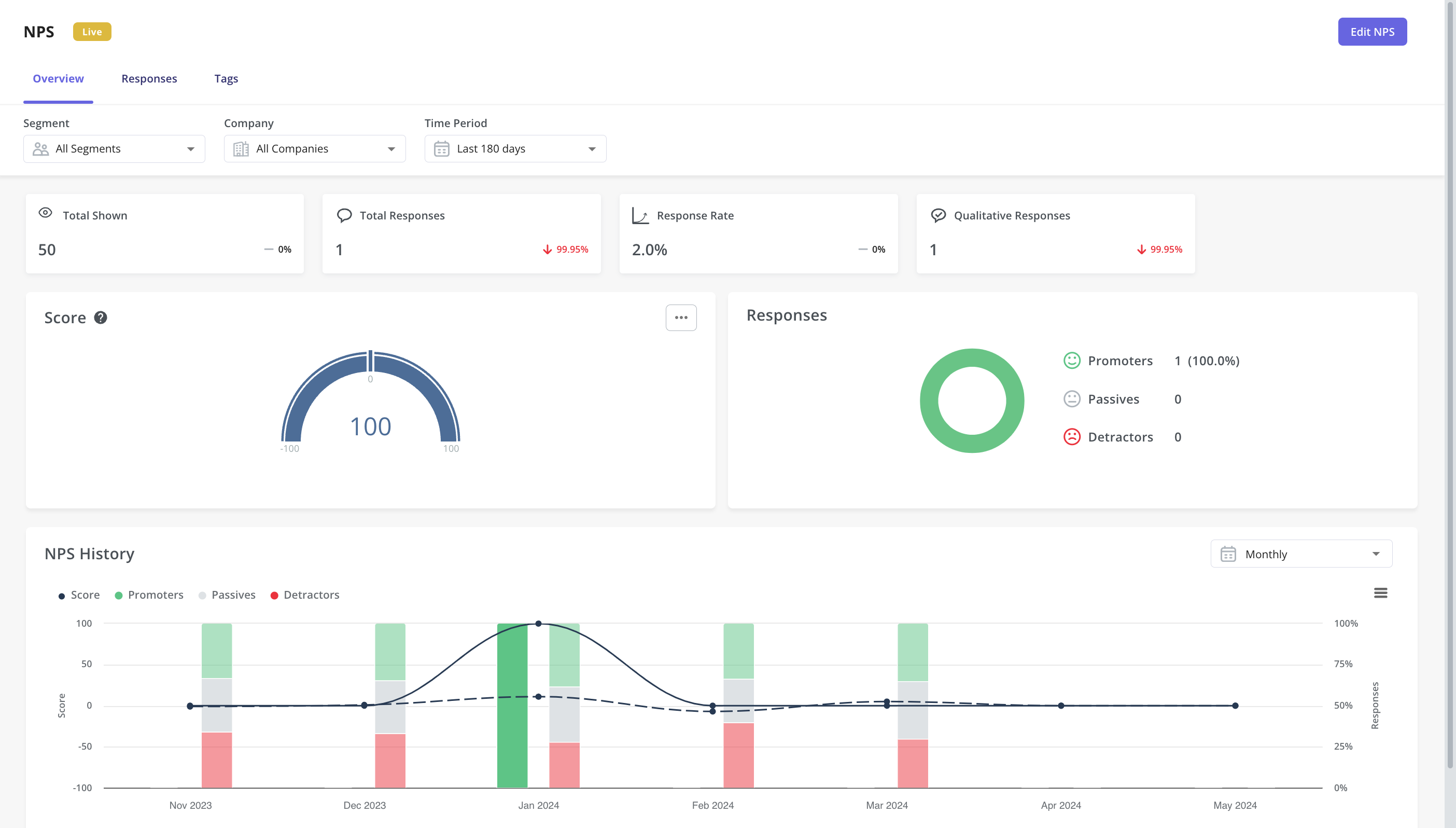
Drive account expansion with in-app messages
Improve Net Revenue Retention by driving account expansion. Contextual in-app messaging is another way that can help generate additional revenue growth. Contextual alerts are triggered in the app where needed, to remind users about upgrades.
For example, when a user scrolls to see the message history in Slack and hits the workspace limits, a button shows a message that they have reached the end of the 10,000 most recent messages.
It puts the upgrade button in front of the user at the exact moment when they need it.

Use FOMO to remind existing customers what they are missing on
FOMO can be quite powerful in driving account expansion. Constantly reminding users what they are missing out on and offering an easy way of getting the extra value is a sure way of generating more expansion revenue.
Here’s an example of how SmallPDF uses it to drive upgrades (yes, chances are more users will upgrade after a free trial of a premium account).
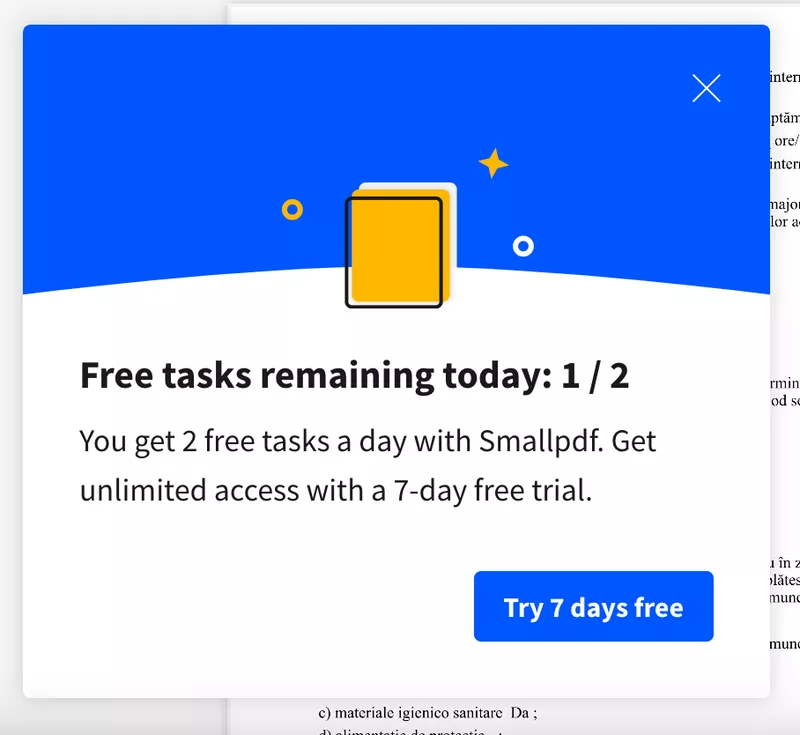
They remind users of how many tasks they have left on a specific day and prompt them to try the premium plan that removes the restriction.
This is a great way of ensuring that users know what they’re missing out on by not upgrading.
Use churn surveys to uncover the reasons behind customer churn
Even churned customers can be informative resources. It is important to know why your users are leaving so that you can work on those issues in the future.
And churn surveys are a great way of understanding what your product is missing and what is needed to improve.
Use churn surveys to ask customers a simple question (why are they leaving?) when they hit the cancellation button.
Take Asana for example and the simple survey they use.
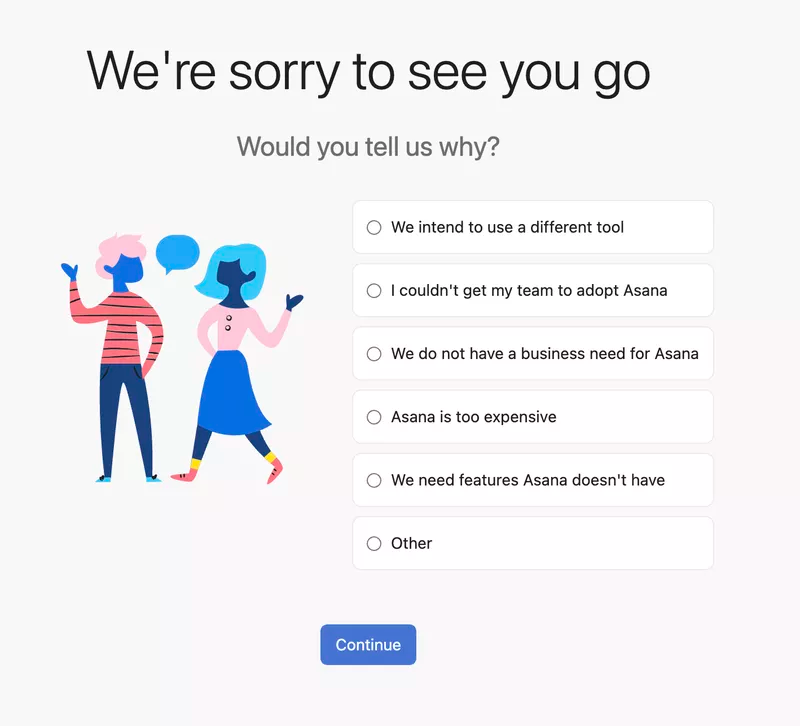
Use the most common reasons why customers churn as a multi-choice list of answers and then automate responses based on them. This will allow you to offer alternatives to churning, increasing the customer retention rate.
When a user clicks on the ” Asana is too expensive” option, they are prompted with a different modal, offering an alternative to canceling based on the user’s stated reason.
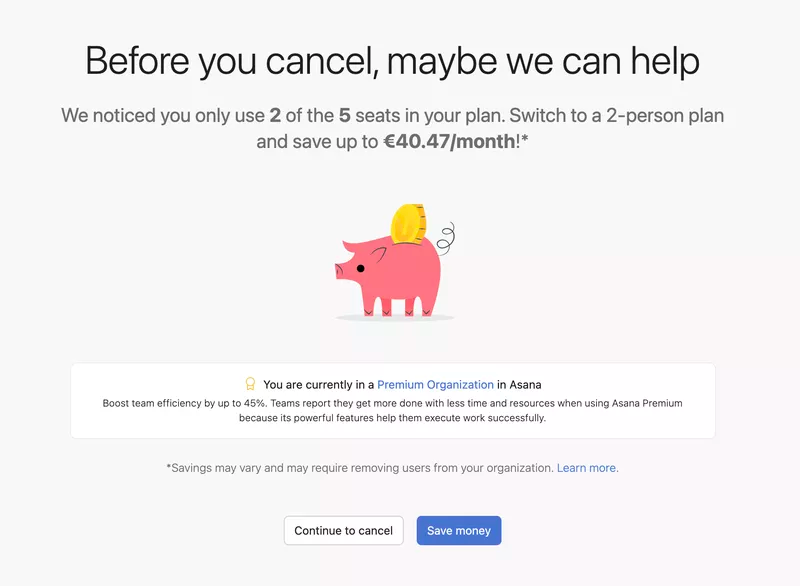
If you can’t convince the user to stick around, at least you can begin to understand why users churn and use the insights to improve your product and the user experience.
Conclusion
Net Revenue Retention is a crucial metric and now you have a few ready-to-use tactics for improving it, either by focusing on driving expansion revenue or increasing customer retention.
Want to drive Net Revenue Retention up with a customer success platform? Implement some of the tactics we covered in this article with Userpilot. Get a Userpilot Demo and see how easy it can be to get started.




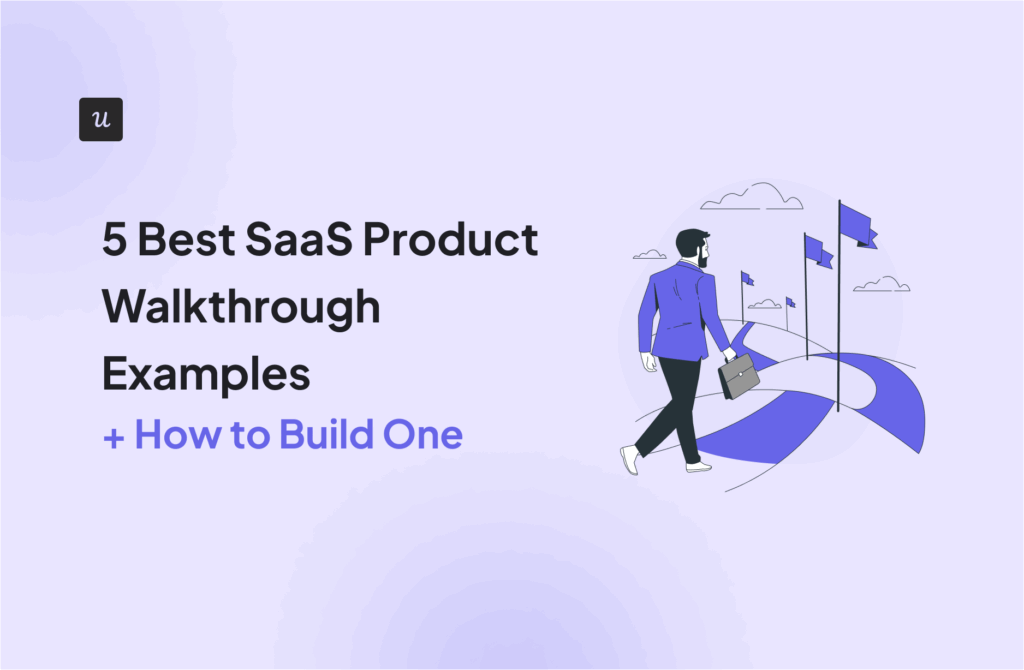

![Appcues Analytics: An In-Depth Review [Features, Alternatives, and More] cover](https://blog-static.userpilot.com/blog/wp-content/uploads/2023/02/appcues-analytics-an-in-depth-review-features-alternatives-and-more_729c454329e85f1fd1bc991ae64d5f71_2000-1024x670.jpg)


